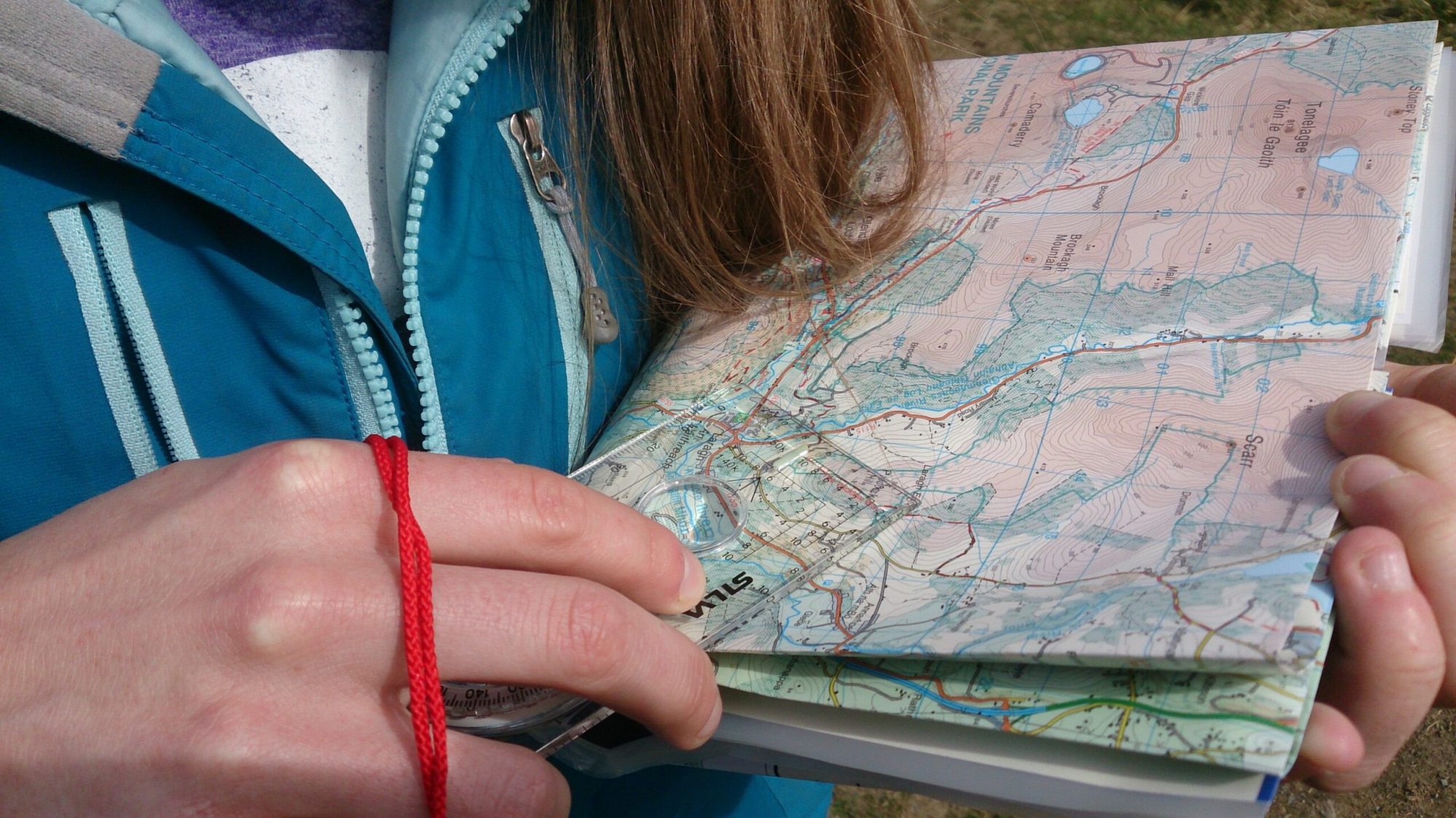Relocation Techniques in Navigation

One of the most important navigation skills is being able to relocate yourself when you have become ‘lost’ or more correctly, ‘temporarily misplaced’. Having the relocation techniques to deal with such a situation is a key element in being a competent navigator.
Firstly, do not panic. Stay calm and stay where you are.
Many people, on realising they are misplaced, will press on more quickly, or walk in any direction in the hope of finding something they recognise, thus making the problem worse.
Have something to eat and drink, this will both give you time to calm down and increase your blood sugar to help you think.
Gather All Available information
What can you see around you? Are any features in view, such as a forest edge or a stream, and what is the shape of the terrain around you, which way is the ground sloping?
How far have you walked since your last known position, (the location where you were last certain of your position). How long did it take you? What distinctive features did you pass, such as a path junction, knoll or forest edge?
See if you can locate any of these features on your map, and use the information to narrow down the possibilities.
Aspect of Slope
If the terrain you are on is sloping it is possible to use this important technique to help you find your position. Use your compass to take a bearing directly down the line of the slope, that is the line that a rolling ball might take, adjust for magnetic variation, and then search the map for slopes with that aspect.
In the example above, if we know we are somewhere in the vicinity of hill 668, and we take a bearing down the slope of 198°, then we can eliminate all slopes that do not have that aspect.
With our bearing set on the compass, we can line up the orienting lines in the compass housing with the north-south grid lines on the map. By moving the compass around the map we can locate the slope(s) where the long edge of the baseplate is pointing directly down slope, (and is at right angles to the contours).
We can now locate ourselves somewhere on the southwest slope of hill 668.
Back Bearings
If you have been walking on a bearing, and the indications are that it was incorrect, then it is still possible to return to your last known position.
Instead of walking with the red end of the compass needle aligned with the orienting arrow, (keeping red in the shed), turn yourself through 180° and align the white end of the compass needle with the orienting arrow, (put white in the shed).
Following this bearing and remembering the paces, or time it took, you can return you to your previously known position. This will only work if you did not stray wildly off the original bearing, or wander around the hill hoping to see something you recognised.
Resection
Resection can be a time consuming process. It also relies on the fact that you can see far enough to identify two, and preferably three, major features that are also on the map such as hill tops or stream junctions.
It could be argued that if you can identify these features then you are not misplaced! However, under certain circumstances it can be a useful technique. If you are somewhere along a long, featureless ridge for example, and need to pinpoint your position more accurately.
- Take a compass bearing to a feature, and after converting it to a grid bearing, place one of the top corners of the compass baseplate on the feature identified on the map.
- Carefully manoeuvre the compass until the orienting lines in the housing line-up with the north-south grid lines on the map, being sure to keep the corner of the baseplate on the feature and the orienting arrow pointing north.
- Your position now lies somewhere along the long edge of the compass base plate, you can now plot this line on the map using a pen, (see red lines above).
- Repeat this for one or more features to pinpoint your position, depending on the accuracy with which you took the bearings your position will lie at the intersection of these lines.
Article by Russ Mills – Mountaintrails
These, and other navigation techniques, can be found in ‘Navigation in the Mountains’, published by Mountain Training and available through our website shop here:
https://mountaintrails.ie/shop/navigation-in-the-mountains-book/
